| Rotaria rotatoria: whirling specimen from (5); in contrast to some other Rotaria-species like for example R. macrura this species is characterized by a rostrum that is aligned perpendicular to the longitudinal axis of the animal. The transect of the rostrum is semicircular (arrowhead). Also in contrast to some "eyeless" species from the same genus like for example R. magnacalcarata or R. sordida this species has two rostral eyespots. |
| |
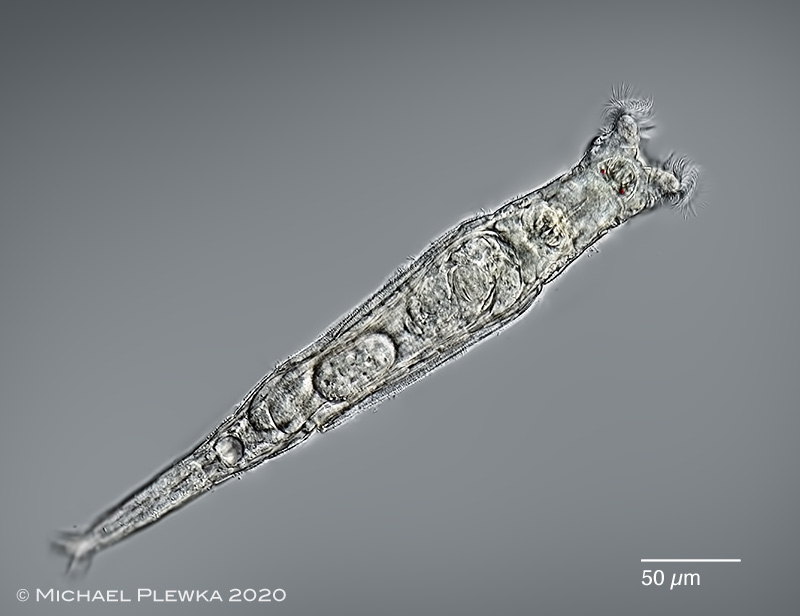 |
| Rotaria rotatoria: pregnant specimen from (6) with 3 descendants: two eggs (arrowheads) and one already fully grown embryo (arrow). Rotifers of the genus Rotaria are viviparous. |
| |
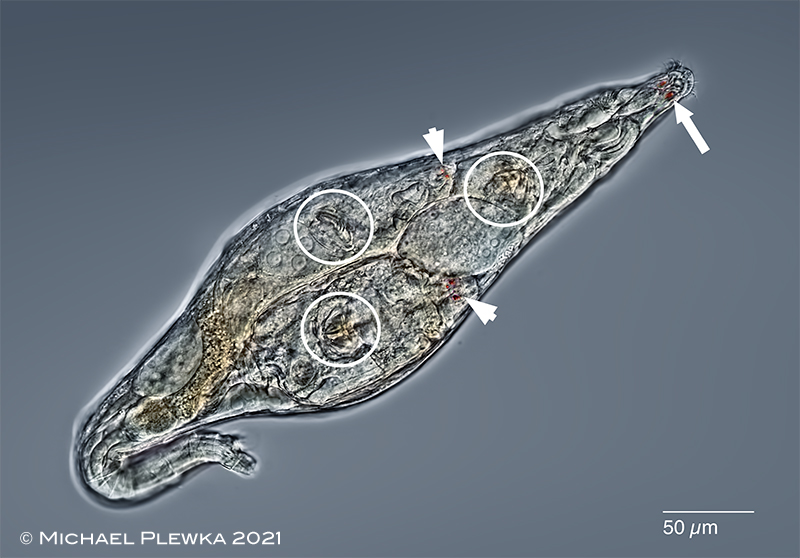 |
| Rotaria rotatoria: creeping pregnant specimen with 2 descendants, slightly compressed by coverslide to get into focus: eyespots of the mother (arrow); eyespots of the daughters (arrowheads). The circles mark the ramate trophi of mother (right) and daughters (left). (7) |
| |
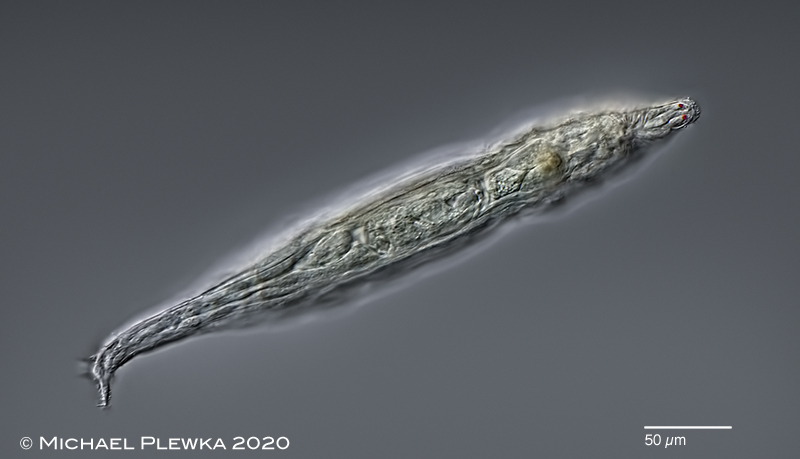 |
| Rotaria rotatoria: creeping young (non-pregnant) specimen (10) |
| |
| |
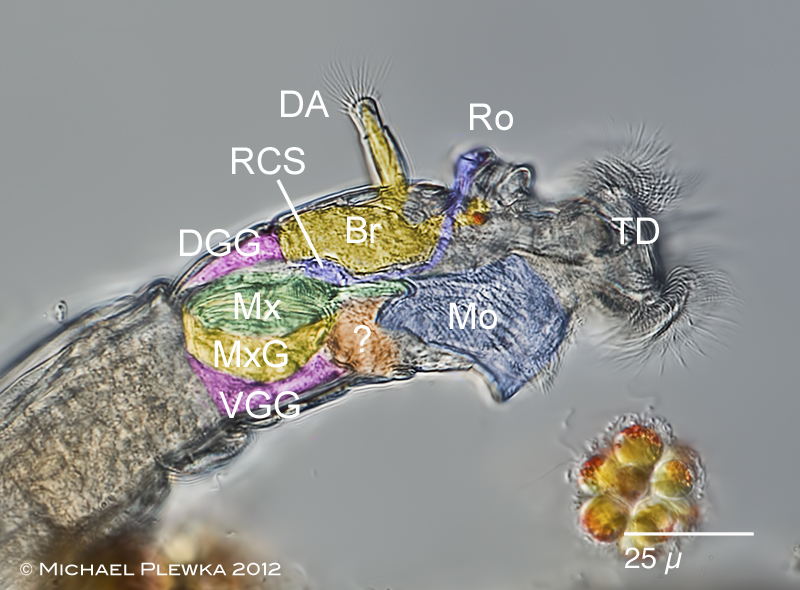 |
| Rotaria rotatoria: another specimen while whirling, lateral view, artificially colored. Br: brain; DA: dorsal antenna; DGG: dorsal gastric gland; Mx: mastax; MxG: mastax gland; Mo mouth/ buccal field; RCS: retrocerebral sac; Ro: rostrum; TD: trochal discs; VGG: ventral gastric gland. The colony of algae which is in the vortex of the trochal discs is Synura sphagnicola. (3) |
| |
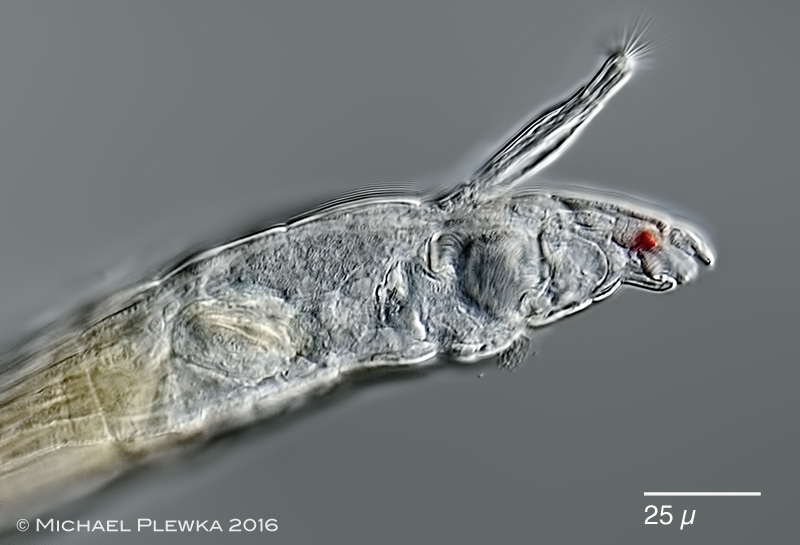 |
| Rotaria rotatoria: creeping specimen, lateral view; focus plane on the dorsal antenna. In contrast to Rotaria macrura the dorsal rostrum lamella is longer than the ventral side which gives a beak-like appearance. (5) |
| |
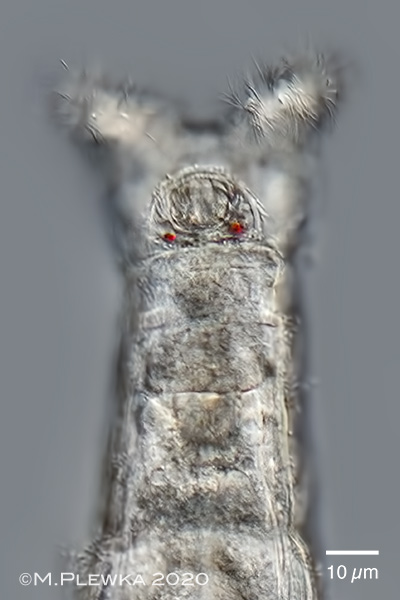  |
| Rotaria rotatoria: same specimen, whirling; anterior part. Left: focus plane on the rostrum, which, in this optical transect, is semicircular while orientated perpendicular to the longitudinal axis of the animal when the corona is protruded. Right: focus plane on the two-lobed, somewhat triangular upper lip. |
| |
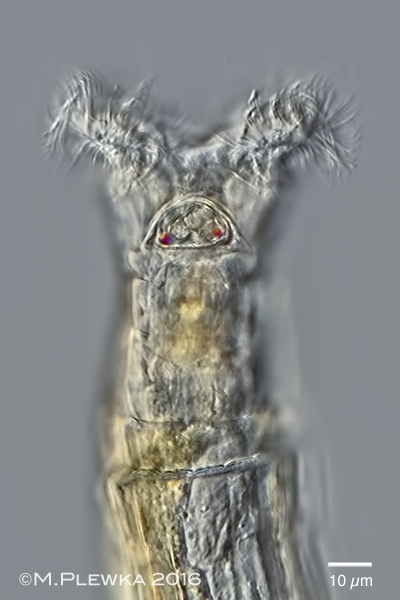 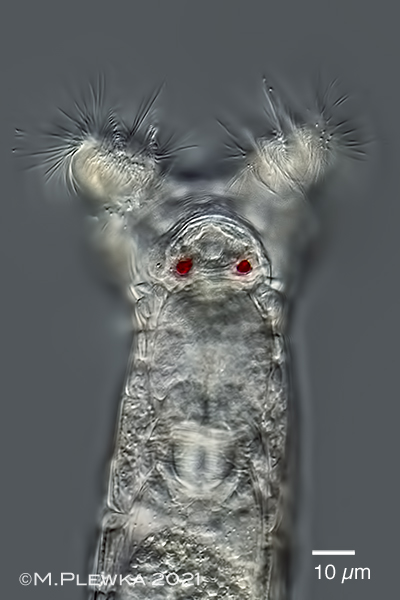 |
| Rotaria rotatoria: two other specimens with extended corona, focal plane on the rostrum and eyespots. |
| |
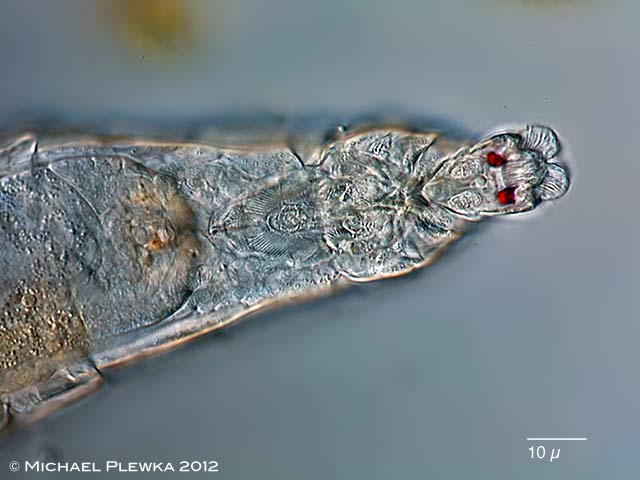 |
| Rotaria rotatoria; rostrum with divided lamella and two red eyespots (4) |
| |
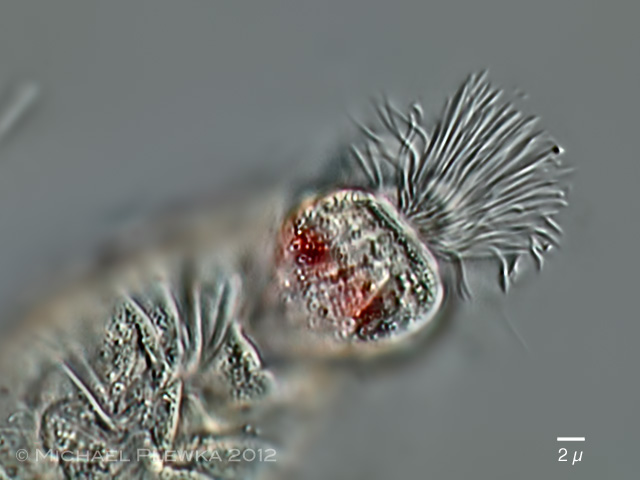 |
| Rotaria rotatoria, rostrum with cilia. The cilia have probably sensory functions.(2) |
| |
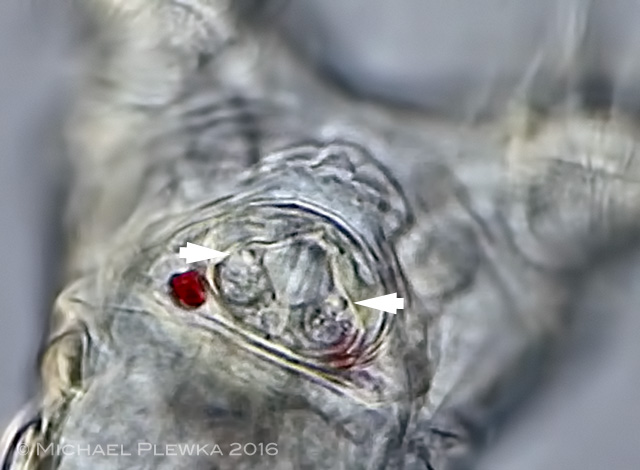 |
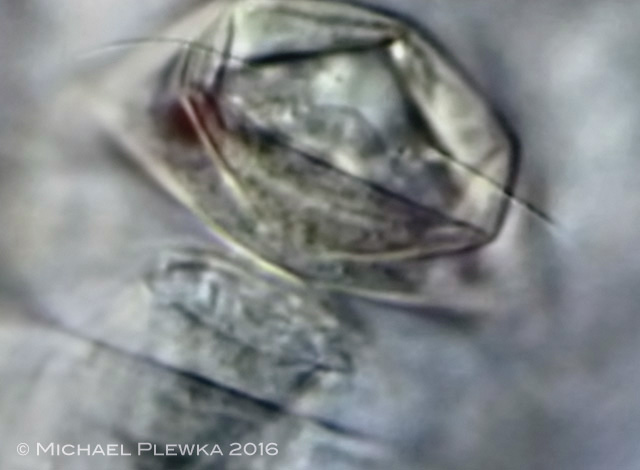 |
| Rotaria rotatoria, rostrum of a whirling specimen. The upper image shows an optical transect of the rostrum. The arrowheads point to the bulbous base of two sensory bristles which are visible in the lower picture. (Both pictures are still images from a video). (5) |
| |
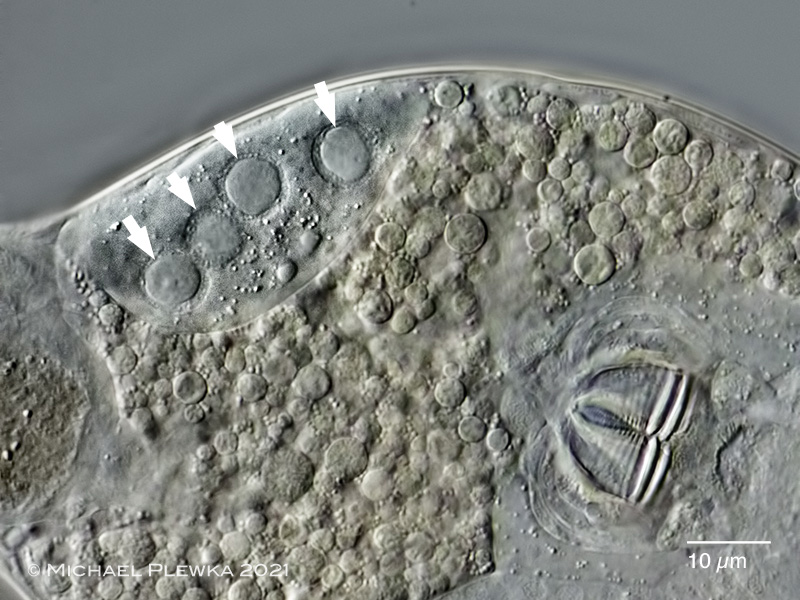 |
| Rotaria rotatoria, trunk of a specimen which is compressed by the coverslide In contrast to many other bdelloids some (??all??) of the rotifers o genus Rotaria have only 4 nuclei in the syncytial vitellarim (marked by arrowheads). The nuclei are very big because of extensive polyploidism. Lower right corner shows the trophi with dental formula (DF): 2/2. (7) |
| |
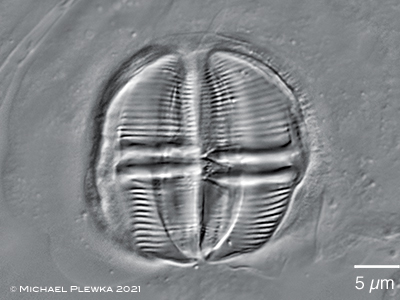 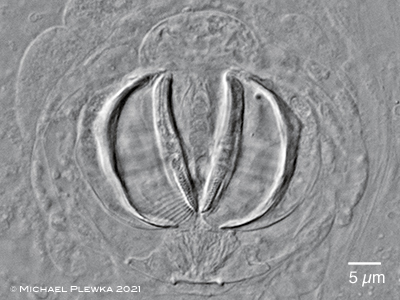 |
Rotaria rotatoria, ramate trophi; left image: cephalic view; dental formula (DF): 2/2, which is in contrast to Rotaria tridens (with DF 3/3). Right image: caudal view, ramus length (RaL): 22µm. Images not to scale. |
| |
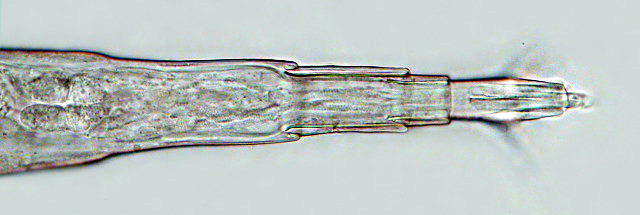 |
| Rotaria rotatoria; focus on the retractable foot which acts like a telescope |
| |
 |
| Rotaria rotatoria; foot with spurs (s) and 3 toes (Z). The number of toes is important for the identification of the different bdelloid genera. (1) |
| |
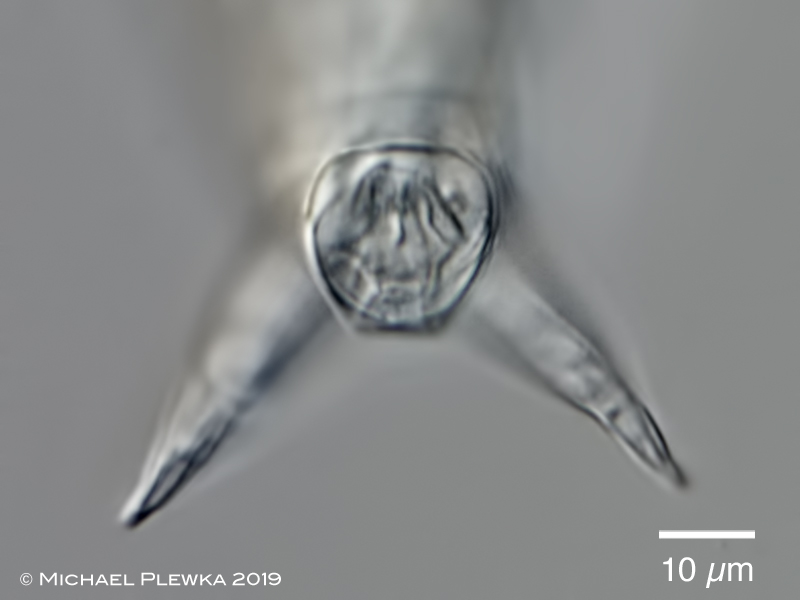 |
| Rotaria rotatoria; foot with spurs, ventral view; spur length ≈ 200% of width of spur -bearing foot pseudosegment. (1) |
| |
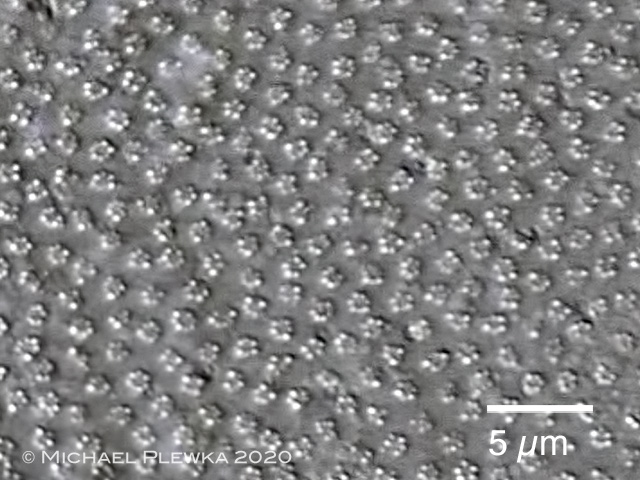 |
| Rotaria rotatoria; integument. In contrast to other Rotaria rotifers like Rotaria neptunia the integument has small wreaths of 5 or 6 protuberances around each pore. (6) |
| |
|
| Rotaria rotatoria; left: specimen from (9); right: specimen from (8). The whole animal are pretty slender, no distinct humps, with long foot. |
| |
| |
|
Location (7): Haselbecke, Hattingen Felderbachtal, NRW Germany; creek |
 |
| |
| Habitat (7): sediment between moss in lotic water . (click image to enlarge >>>) |
| |
| Date (7): 30.12.2021 |
| |
|
|
|
|
|
| |
| |
|
|
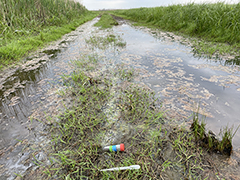 |
| Location (8): nature reserve NSG Unteres Odertal; BB, Germany; Mummertgraben, footpath, puddle |
| |
| Habitat (8):between algae |
| |
| Date (8): 15.05.2023 |
| |
|
|
|
|
|
| |
| |
| |
| location: Gevelsberg Grünes Klassenzimmer (1); Wuppertal, compensation pond (2); Haspelmoor, Bavaria (3); Hattingen Oberstueter, pond (5); St. Mathieu, Bretagne, France, creek (6); Haselbecke, Felderbachtal, Hattingen, NRW, Germany (7); Wodantal, Hattingen, NRW, Germany; pond (9); |
| lhabitat: periphyton (1; 2; 3; 5; 6); moss in lotic water (7); |
| date: 24.01.2012 (2) 04.04.2012 (3); 19.01.2012 (4); 25.08.2016 (5); 26.08.2020 (6); 03.03.2021 (9); |
| |
| |
|
|
|
|